Snorkeling is a captivating experience, allowing enthusiasts to immerse themselves in the underwater world, reveling in its tranquility and observing its vibrant inhabitants. While many imagine vast, fathomless oceans when they think of the seas, the reality is that the best snorkeling often occurs in relatively shallow waters.
However, as with any adventure, there are depths and boundaries to be acknowledged and respected. So, how deep is the water when you actually go snorkeling?
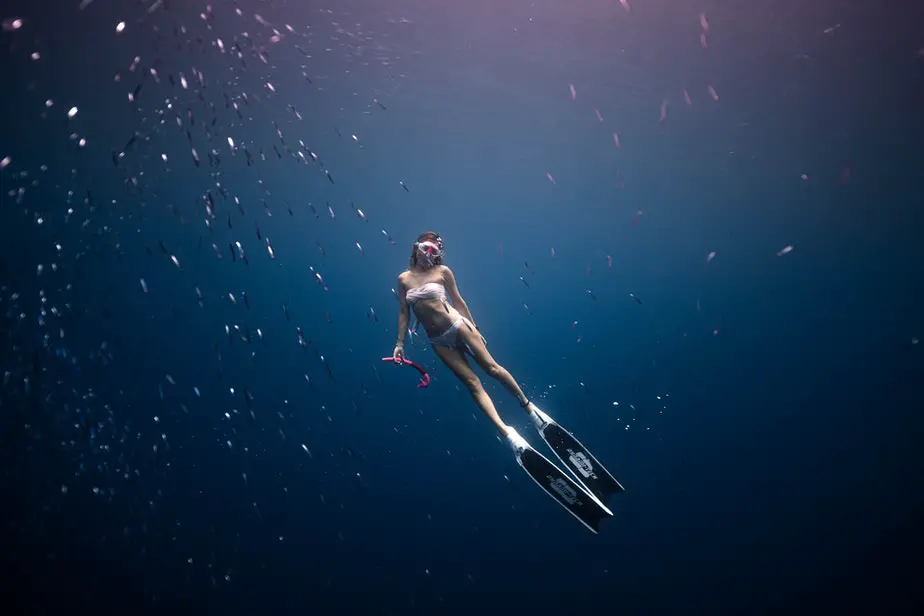
Typically, snorkelers enjoy waters ranging from the surface down to about 5 meters (16 feet) deep. This range offers a sweet spot—shallow enough for sunlight to illuminate the underwater world, yet deep enough to house a diverse array of aquatic life. If you’re snorkeling from a boat, the water depth can be much deeper.
As we delve deeper into this topic, we’ll explore the various factors influencing snorkeling depths, from safety considerations to the alluring call of marine creatures.
What is the typical water depth for snorkeling?
The typical water depth for snorkeling usually ranges from the water’s surface to about 5 meters (16 feet) deep. Snorkeling is designed for observing marine life in shallow waters and staying close to the surface, allowing snorkelers to breathe comfortably through a snorkel tube.
Many popular snorkeling spots, such as coral reefs, lagoons, and coastal areas, naturally exist in shallow waters, making them ideal for this activity.
How deep can I safely go when snorkeling?
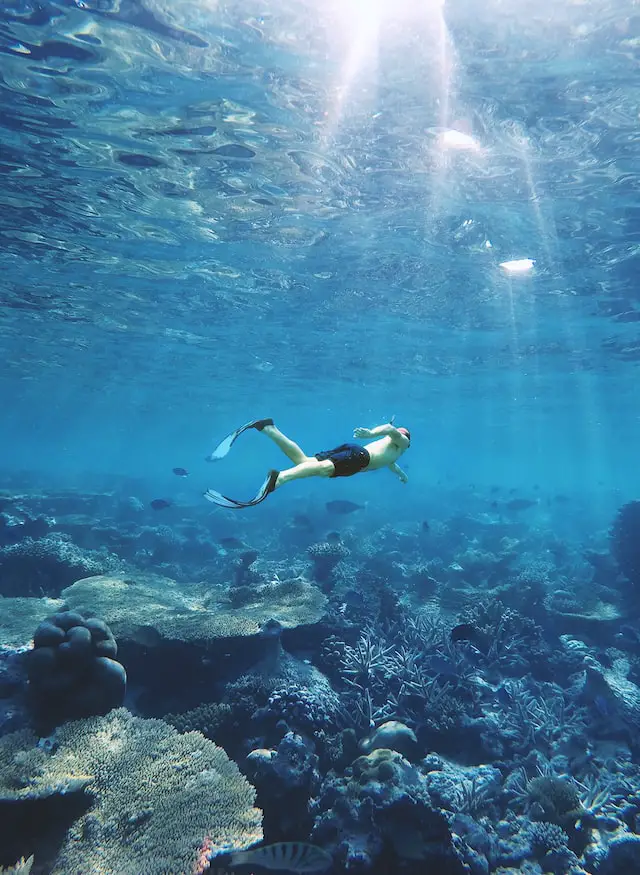
The safe depth for snorkeling primarily depends on an individual’s comfort and experience. While snorkeling is generally practiced in shallow waters, experienced snorkelers sometimes venture slightly deeper, especially if free diving skills are involved. Depths up to 5 meters (or 16 feet) are common.
However, it’s crucial to ensure you can equalize ear pressure, are aware of your surroundings, and can easily resurface without discomfort. Always remember that the deeper you go, the greater the risk when you’re holding your breath.
Are there depth limits recommended for beginner snorkelers?
Yes, for beginner snorkelers, it’s recommended to stay in shallow waters, generally no deeper than 2-3 meters (6-10 feet). Staying in these depths allows beginners to get used to the snorkeling equipment, practice breathing through the snorkel, and maintain a safe environment where they can kick off the seafloor or quickly reach the surface if needed. As confidence and skills improve, they can gradually explore slightly deeper waters.
How does water depth impact visibility when snorkeling?
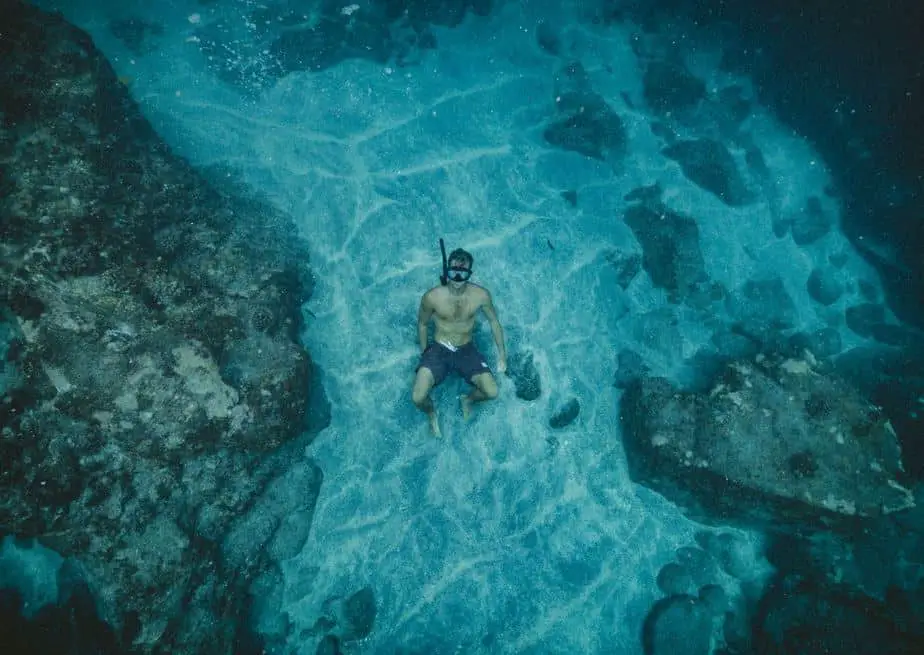
Water depth can have a significant impact on visibility. In shallow waters, sunlight penetrates easily, making the surroundings bright and clear. However, factors like sand being stirred up by currents or careless snorkelers can reduce visibility in these shallower depths.
In deeper waters, less light penetrates, which can darken the environment and make it harder to see. Additionally, other factors like water clarity, plankton blooms, and water currents can also influence visibility at various depths. Generally, the best visibility is often found in a mid-range depth where sunlight still penetrates but without the disturbance of bottom sediments.
Is it safer to snorkel in shallow or deep water?
Safety in snorkeling depends more on conditions and individual comfort than just water depth. Shallow waters can be safe as snorkelers can easily stand or reach the surface, and there’s usually plenty of light. However, these areas can also have strong currents, or snorkelers might accidentally touch sensitive marine life or coral, leading to injury.
Deeper waters pose different challenges. While there might be less risk of touching the bottom or marine habitats, deeper water means more distance from the surface, making it challenging if one needs to resurface quickly. The key is to understand your own abilities and the specific environment you’re snorkeling in.
Can I snorkel over deep water if I stay at the surface?
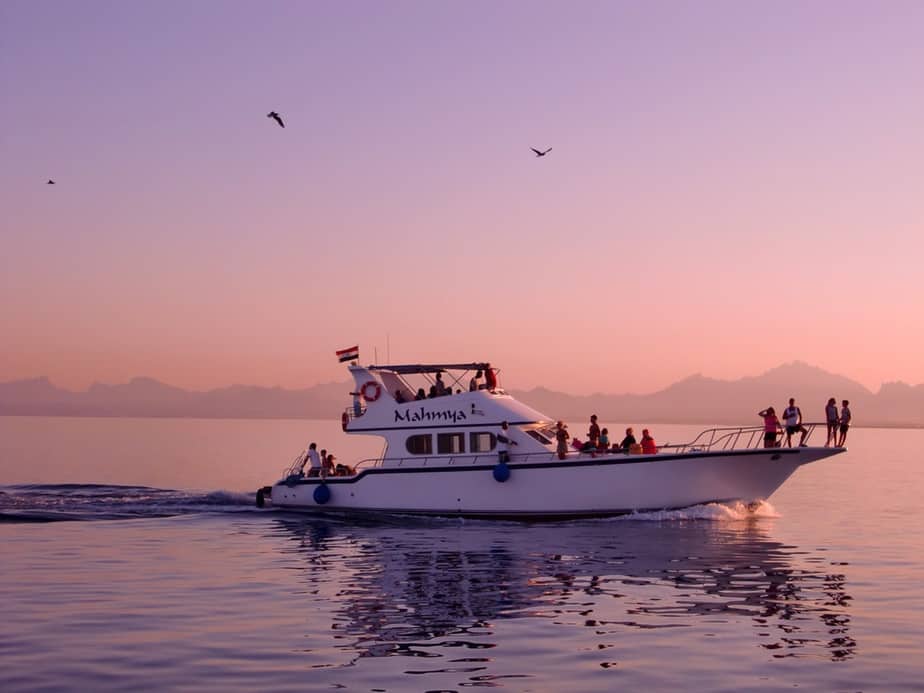
Yes, you can snorkel over deep water as long as you stay at the surface. In fact, many snorkelers enjoy “blue water snorkeling” in deeper waters where they can observe pelagic fish and other open-ocean marine life.
The primary concern isn’t necessarily the depth below but ensuring that you have good buoyancy, are aware of currents, and are using a buddy system for safety. It’s also advisable to have some kind of flotation device, such as a life vest or snorkel vest, with you when snorkeling in deep waters to rest or signal for help if needed.
What are the risks associated with snorkeling in deeper waters?
Snorkeling in deeper waters introduces several risks:
- Decreased buoyancy: The deeper you go, the more challenging it can become to stay afloat, which might lead to exhaustion if one isn’t careful.
- Ear pressure: Descending even a little deeper can cause pressure in the ears, which can be uncomfortable if not equalized properly.
- Stronger currents: Deeper waters often experience different current patterns which can catch snorkelers by surprise.
- Low visibility: As you go deeper, less sunlight penetrates the water, making it darker and reducing visibility.
- Difficulty in reaching the surface: If a snorkeler dives deep and needs to resurface quickly, the distance and potential for panic can be dangerous.
- Encounters with larger marine life: Deeper waters can be home to larger predators. While attacks are rare, snorkelers should always be cautious and respectful.
How does water depth affect marine life sightings when snorkeling?
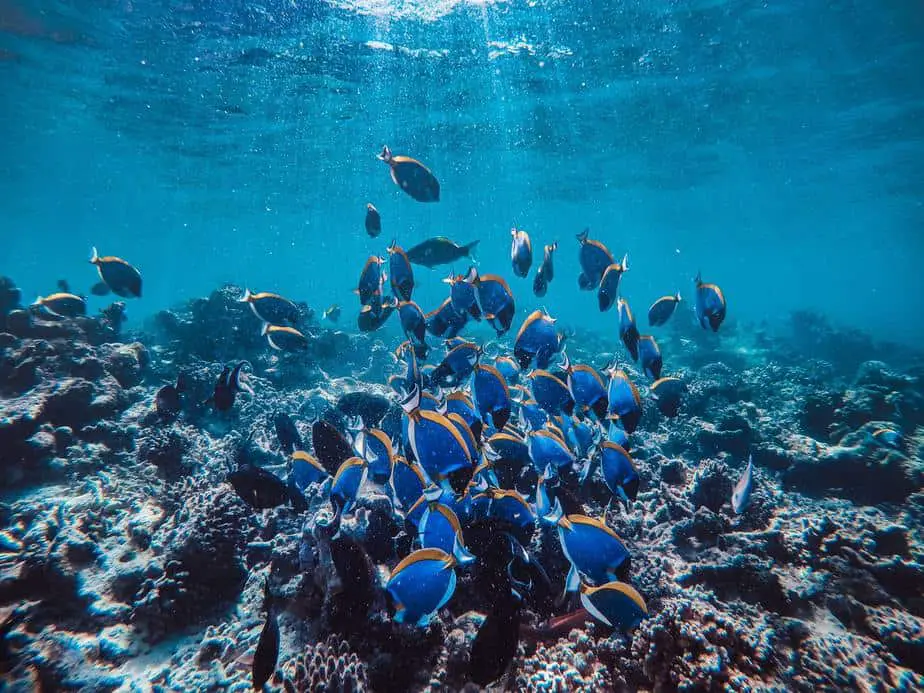
Water depth significantly influences the types of marine life you’ll encounter. In shallow waters, snorkelers are more likely to see smaller reef fish, starfish, sea urchins, and coral formations. As you venture deeper, you might encounter larger fish, pelagic species, and other marine life that prefer open water.
Deeper waters often house marine life that doesn’t come near the shore or surface. Each depth offers a unique ecosystem, and the marine life sightings will vary accordingly.
Do I need special equipment if I plan to snorkel in deeper water?
For casual snorkeling where you mostly stay at the surface, standard snorkeling gear (mask, snorkel, and fins) is generally sufficient. However, if you’re venturing into deeper waters:
- Buoyancy aids: Floatation devices like snorkeling vests can help you stay afloat.
- Dive flag or buoy: To signal your presence to boats or other watercraft.
- Underwater flashlight: Useful in lower light conditions or when exploring deeper or shaded areas.
- Dive watch or depth gauge: If you plan on diving down, it helps monitor your depth.
Are there different techniques for snorkeling in shallow vs. deep water?
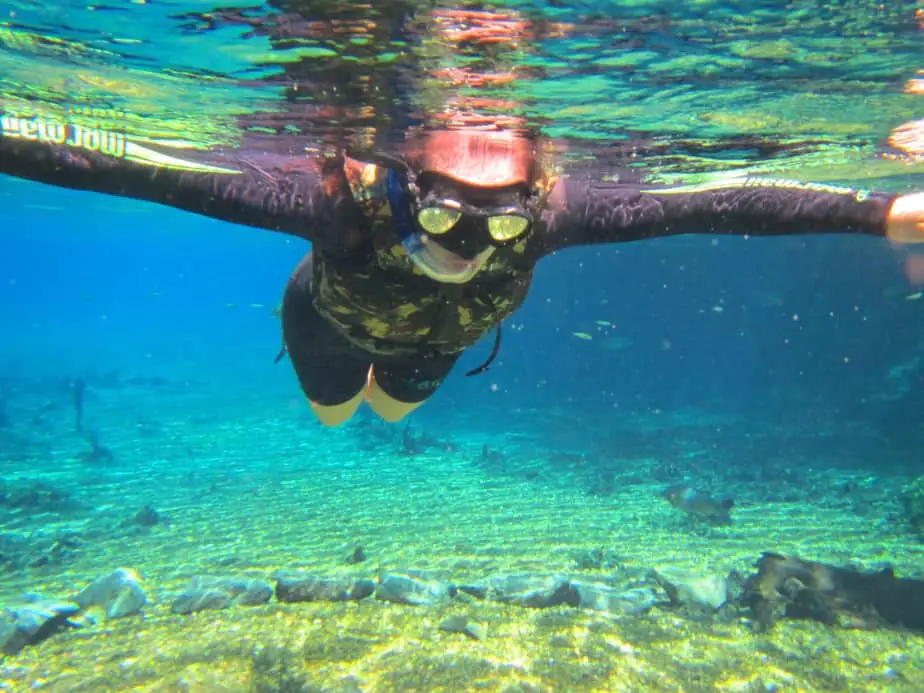
Yes, there are different techniques:
Shallow water:
- Be cautious of your fins and body to avoid touching or damaging coral or disturbing marine life.
- Focus on horizontal swimming to maintain buoyancy and avoid contact with the bottom.
Deep water:
- Focus on maintaining buoyancy. Some snorkelers use a gentle frog kick to avoid descending too deep.
- Monitor your breath. Deeper dives require breath-hold techniques and equalizing.
- Always be aware of your surroundings and the distance to the surface.
How can I gauge the depth of water while snorkeling?
Several methods can help gauge water depth:
- Visibility and light: As you go deeper, less sunlight penetrates, making the surroundings darker.
- Ear pressure: As you descend, pressure increases, and you’ll feel it in your ears.
- Reference points: If snorkeling near a sloping reef or seabed, use it as a reference to estimate depth.
- Dive watch or depth gauge: If you’re serious about depth and free-diving, these tools provide accurate measurements.
- Local knowledge: Often, local guides or dive shops can provide information about depths in popular snorkeling spots.
Does snorkeling depth affect the chances of encountering dangerous marine animals?
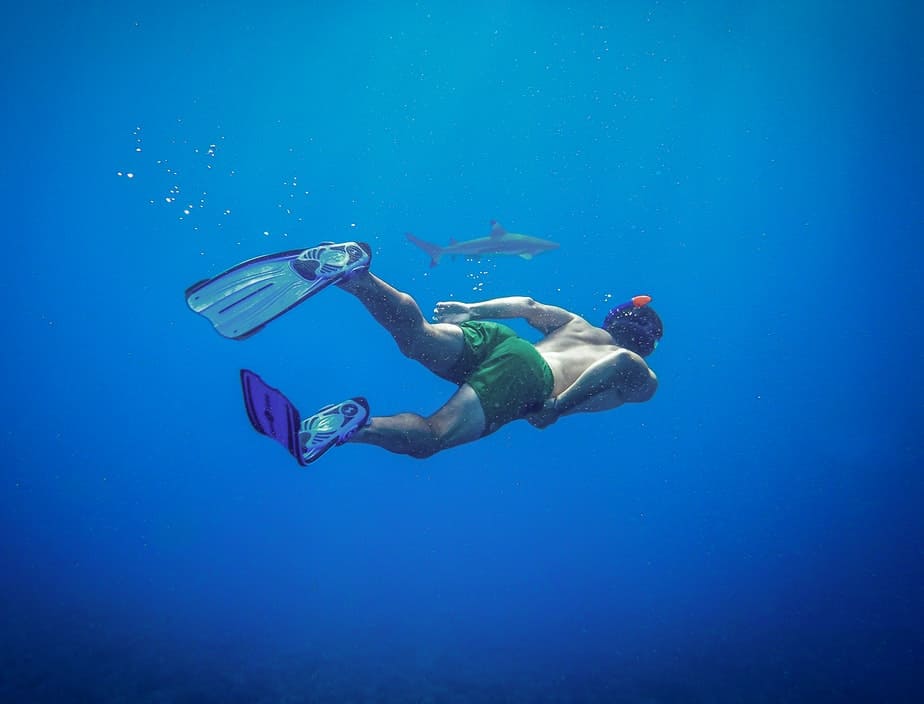
Yes, snorkeling depth can influence the likelihood of encountering certain marine species, including potentially dangerous ones. Shallow waters typically house smaller reef fish, crustaceans, and other marine life.
As you venture deeper, there’s a higher chance of encountering larger pelagic species, some of which can be potentially dangerous, such as certain sharks or rays.
While many of these species are not inherently aggressive toward humans, they can become defensive if they feel threatened. Always be cautious and aware of your surroundings, regardless of depth.
Can the depth of water impact the temperature while I’m snorkeling?
Absolutely. Water temperature can vary with depth. This phenomenon is known as thermocline, where a layer of water in the ocean or a lake is sandwiched between two layers of varying temperatures.
As you descend, you might suddenly feel the temperature drop. This is more noticeable in deeper waters and certain locations, such as where cold currents are prevalent.
In general, shallow waters warm up faster under sunlight, making them warmer, especially during the day, than deeper waters.
How can I improve my confidence when snorkeling over deep areas?
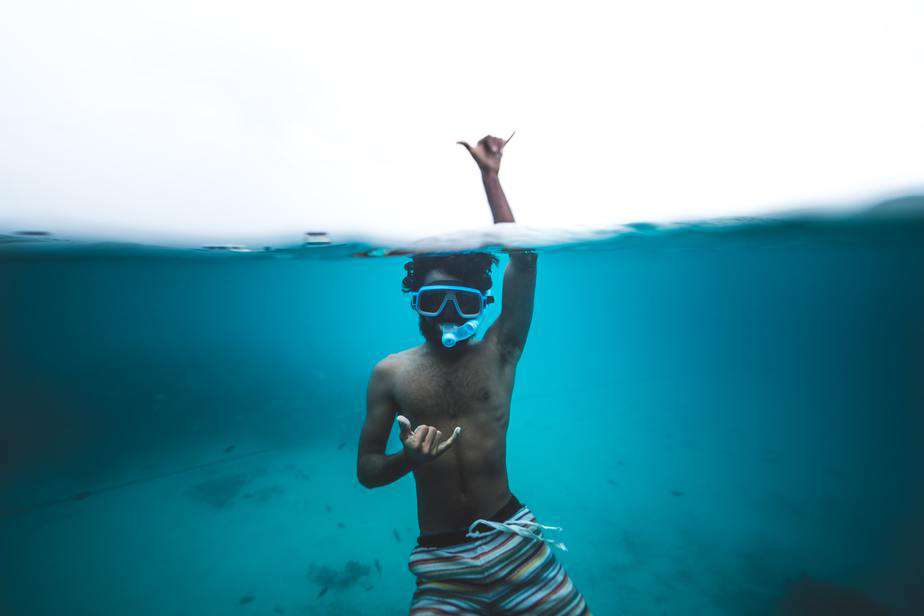
Improving confidence in deep waters involves a mix of practice, knowledge, and preparation:
- Gradual exposure: Start in shallow waters and progressively explore deeper areas as you become more comfortable.
- Buddy system: Never snorkel alone, especially in deeper waters. This ensures that help is available if needed.
- Knowledge: Learn about the marine life in the area. Knowing what to expect can reduce anxiety.
- Equipment familiarity: Ensure you’re comfortable with your snorkeling gear. Sometimes, discomfort can arise from ill-fitting masks or fins.
- Breathing exercises: Practicing calm, steady breathing can help manage anxiety and improve your overall snorkeling experience.
- Attend classes: Some places offer snorkeling classes or guided tours that can provide invaluable experience and boost confidence.
What are the environmental concerns when snorkeling in shallow vs. deep water?
Both shallow and deep waters have environmental concerns when it comes to snorkeling:
Shallow water:
- Coral damage: Accidental kicks or touches can harm fragile coral formations.
- Marine disturbance: Closer proximity to the seabed and marine life means there’s a higher chance of disturbing habitats or animals.
- Sediment disturbance: Fins can stir up sand, which might suffocate nearby corals or other marine life.
Deep water:
- Wildlife interaction: Deeper waters might house more significant marine species, and interactions should be minimized to avoid stressing the animals.
- Less oversight: Fewer snorkelers frequent deeper waters, which might mean less oversight in terms of conservation or guidelines.
In both scenarios, the key is to be respectful and minimize your impact. This involves not touching marine life, being cautious with equipment, and adhering to local guidelines or recommendations.
Should I be concerned about boat traffic when snorkeling in deeper waters?
Yes, boat traffic is a legitimate concern when snorkeling, especially in deeper waters away from the shore. Boats, jet skis, and other watercraft may not always see snorkelers, especially if they are diving beneath the surface.
Here are some safety precautions:
- Use a dive flag or buoy: This signals to nearby boats that there’s a diver or snorkeler below.
- Stay aware: Regularly check your surroundings and listen for boat engines.
- Avoid busy channels: Steer clear of areas with heavy boat traffic.
- Snorkel during daylight: Visibility is better for both you and the boat operators.
- Follow local guidelines: Some areas have specific zones for snorkeling or diving, keeping you safe from boat traffic.
Remember that safety should always be your priority, and it’s essential to take precautions to avoid potential hazards.
Sources:

